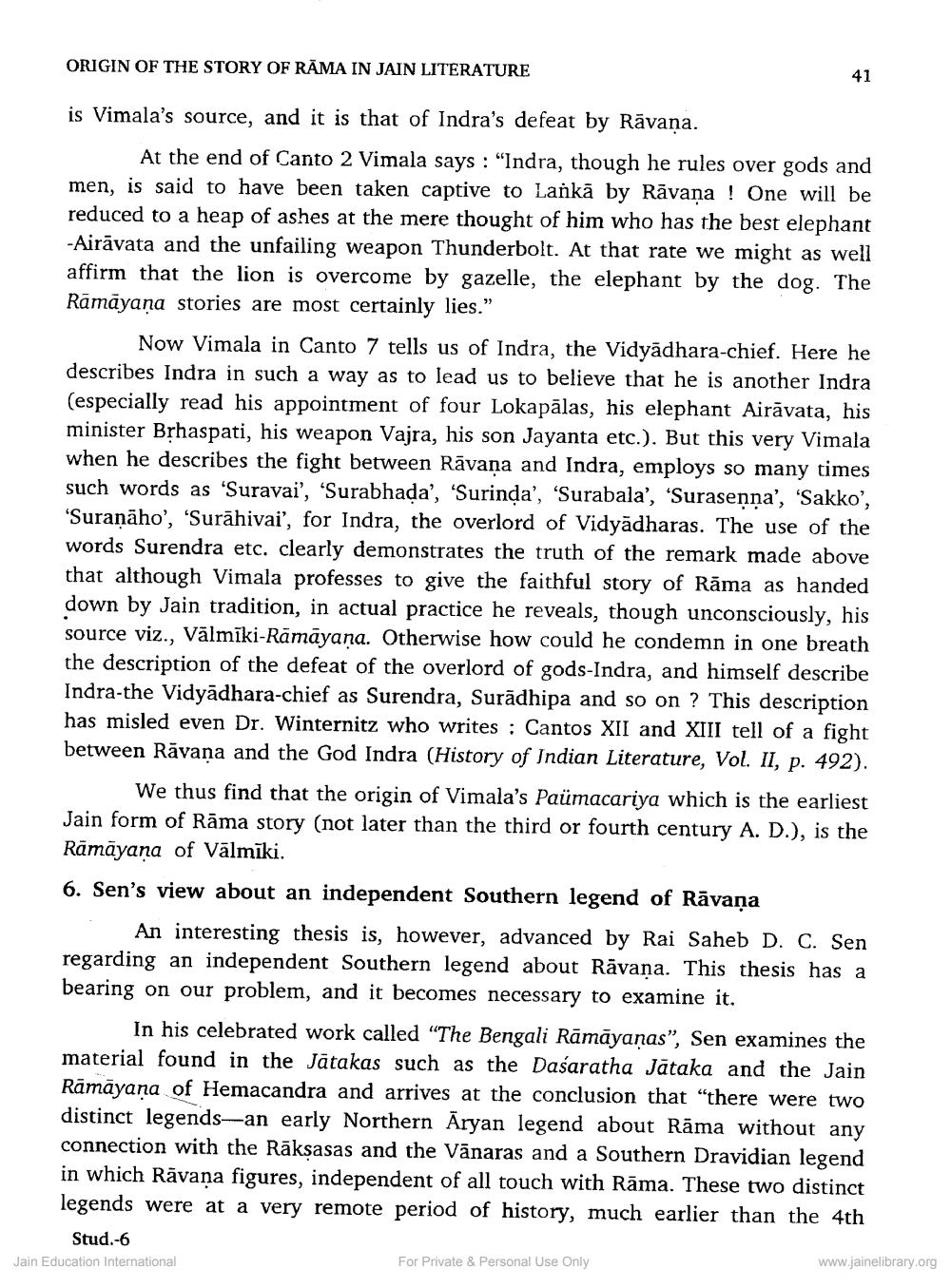________________
ORIGIN OF THE STORY OF RĀMA IN JAIN LITERATURE
is Vimala's source, and it is that of Indra's defeat by Rāvaņa.
At the end of Canto 2 Vimala says : "Indra, though he rules over gods and men, is said to have been taken captive to Lankā by Rāvana ! One will be reduced to a heap of ashes at the mere thought of him who has the best elephant -Airāvata and the unfailing weapon Thunderbolt. At that rate we might as well affirm that the lion is overcome by gazelle, the elephant by the dog. The Rāmāyana stories are most certainly lies."
Now Vimala in Canto 7 tells us of Indra, the Vidyadhara-chief. Here he describes Indra in such a way as to lead us to believe that he is another Indra (especially read his appointment of four Lokapālas, his elephant Airāvata, his minister Brhaspati, his weapon Vajra, his son Jayanta etc.). But this very Vimala when he describes the fight between Rāvana and Indra, employs so many times such words as 'Suravai', 'Surabhada', 'Surinda', 'Surabala', 'Surasenna', 'Sakko', 'Suranāho', 'Surāhivai', for Indra, the overlord of Vidyadharas. The use of the words Surendra etc. clearly demonstrates the truth of the remark made above that although Vimala professes to give the faithful story of Rāma as handed down by Jain tradition, in actual practice he reveals, though unconsciously, his source viz., Vālmīki-Rāmāyana. Otherwise how could he condemn in one breath the description of the defeat of the overlord of gods-Indra, and himself describe Indra-the Vidyadhara-chief as Surendra, Surādhipa and so on ? This description has misled even Dr. Winternitz who writes : Cantos XII and XIII tell of a fight between Rāvana and the God Indra (History of Indian Literature, Vol. II, p. 492).
We thus find that the origin of Vimala's Paümacariya which is the earliest Jain form of Rāma story (not later than the third or fourth century A. D.), is the Rāmāyana of Vālmīki.
6. Sen's view about an independent Southern legend of Rāvaņa
An interesting thesis is, however, advanced by Rai Saheb D. C. Sen regarding an independent Southern legend about Rāvana. This thesis has a bearing on our problem, and it becomes necessary to examine it
In his celebrated work called “The Bengali Rāmāyanas", Sen examines the material found in the Jātakas such as the Dasaratha Jātaka and the Jain Rāmāyana of Hemacandra and arrives at the conclusion that "there were two distinct legends-an early Northern Aryan legend about Rāma without any connection with the Rākşasas and the Vānaras and a Southern Dravidian legend in which Rāvana figures, independent of all touch with Rāma. These two distinct legends were at a very remote period of history, much earlier than the 4th
Stud.-6 Jain Education International
www.jainelibrary.org For Private & Personal Use Only




